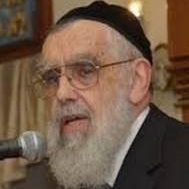Is, Was, Will Be

This is the essential Name of G-d — Who is the very embodiment of past, present, and future
To change some elements of our past, or to transfer a happy past into the future, are Sisyphean tasks. But with the magic of Biblical Hebrew, this miracle can be performed. Stay tuned.
Biblical Hebrew has an odd grammatical construction: Simply by adding the letter vav, the future becomes the past, and the past becomes the future. This is the vav hamehapech, the “vav that inverts,” which grammarians call the “vav conversive.” For example, the opening of the second paragraph in the Shema: “V’hayah im shamo’a — It will be that if you listen….”
Without the vav, read as hayah, it means “it was that you listened.” But the vav inverts it into the future, “it will be…” Similarly the opening of Shabbos Kiddush: “Vayehi erev — and it was evening…” Without the vav, read as yehi — “it will be evening.”
Since this is Lashon Hakodesh, G-d’s own language, any peculiarities require our attention. Perhaps it suggests that the tenses are but finite creations of our own, that they have no objective reality and are not separate entities, and that they are at bottom all one. That is, future and past are so intertwined as to be interchangeable.
These transient, ever-shifting tenses reflect a profound idea. Past, present, and future times are human constructs, but for G-d, there’s no such entity as Time. Though it is beyond our comprehension, from His vantage point, what has not yet taken place, from our limited perspective, has already taken place. That is, for us mortals constrained by time, there is a line of demarcation separating past, present, and future. But for G-d, Who dwells above time and can view everything simultaneously, all actions are in the same timeless zone, a zone without tenses.
This is the meaning of the ineffable Tetragrammaton, which is a fusion of hayah, hoveh, and yihyeh — past, present, and future. This is the essential Name of G-d — Who is the very embodiment of past, present, and future. This encompasses the transcendent nature of G-d Who is not limited by Time. Thus, Hashem echad means not only that G-d is One; it also means that for Him there is no past, present, and future; it is all one.
That famous provocative verse in Koheles 1:9 echoes this: “Mah shehayah hu sheyihyeh — That which was is that which will be… and there is nothing new under the sun.” Since for G-d, the tenses do not exist, nothing is new under the sun.
And the elusive, if not illusory, present? When does it begin or end? As soon as we capture it, it dissolves and becomes the past. Perhaps it does not exist at all, but is an evanescent shadow offering only an ephemeral glimpse of yesterday, and a fleeting intimation of tomorrow.
Discussing past and future, the Sages comment cryptically: “V’hayah is lashon simchah (joy), and vayehi is lashon tzaar (sadness)” (Megillah 10b). They say not why. Perhaps (as the Gra says) because the vav in v’hayah transforms the past into the future; i.e. one builds from his past to create a future. One looks forward to the future — and that anticipation is always a reflection of simchah. But in vayehi, the same vav converts the future into the past. Therefore, vayehi is lashon tzaar — sadness — because through it the future vanishes and life without a future is tragic.
Note that Tishah b’Av merges both past and future, recalling the past destruction and kindling hope for the future restoration and redemption — which Eichah calls moed, festival (1:15). As such, it is the embodiment of memory and anticipation, history and destiny, which are at the very heart of Judaism. Thus the vav hamehapech is not merely a grammarian construction. It reflects our very core; it is memory and anticipation.
As for changing the past, the Sages declare that when we genuinely repent for past misdeeds, those misdeeds are transmogrified into merits (Yoma 86b; Rambam, Teshuvah VII:4-5). And certainly, present behavior affects our future. What of changing the past into the future? Sadly, even a truckload of vav conversives could never achieve that.
Nevertheless, by staying tuned, we are no longer morphologically challenged. And now we can appreciate the aphorism: “He’avar ayin, he’asid adayin, im kein daagah minayin — the past has vanished, the future has not arrived, so why worry?”
(Originally featured in Mishpacha, Issue 870)
Oops! We could not locate your form.






